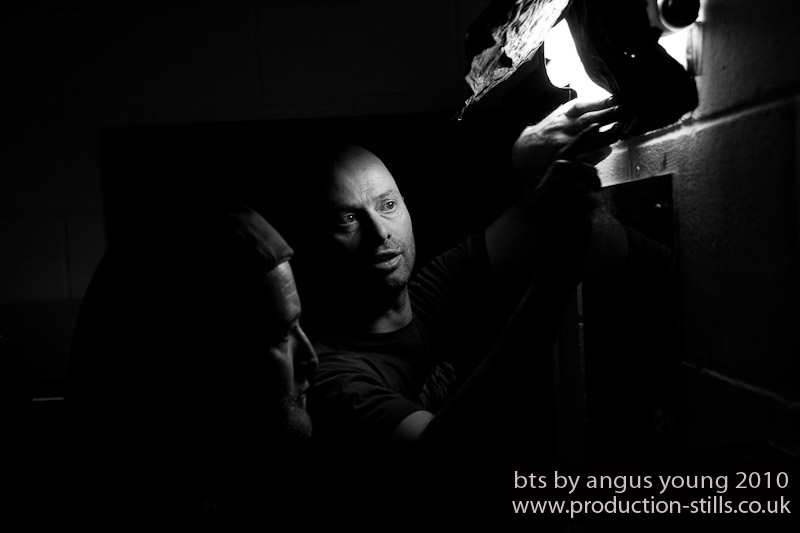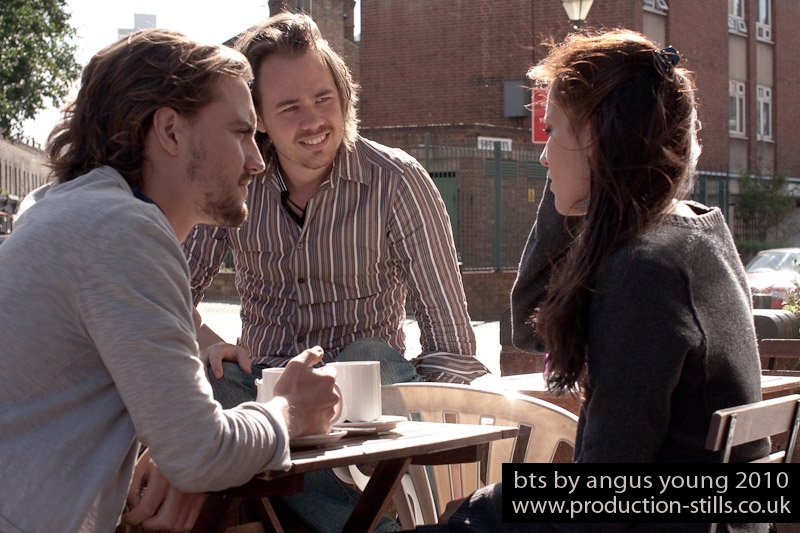Getting great images on set is always a challenge. A photographer’s best chance at getting the great results is by having the respect and trust of many different crew members. Here’s my top 5.
Gaffer/Lighting Crew – They set up the lights, make them safe (structurally and electrically) create the mood for the scene being shot. They put the sparkle into your images and, if you treat them right they’ll leave the lights on for you that little bit longer giving you the time to capture photos while the set is quiet during breaks.

Lee Wooster - Gaffer on Tortoise
Hair/Make-up/Wardrobe Stylists – when they’re busy it’s controlled chaos, but then, when the shooting is happening they’re nearby and waiting patiently. They’ll give your actors final checks for your still shots making everyone look good!
Director – Always busy and always the priority for everyone on set. A good stills photographer will know not to interrupt the director or distract anyone at the time they’re needed for following the Director’s instructions. Being in tune with the Director’s creative vision and understanding the compositions and shots that appeal to them means that your work is going to be meeting the production’s needs.

Director Daniel Audritt giving instructions to Christopher Berry and Brandi Bock the lead actors in The Brightest Colours Make Grey
Actors – They’re often the centre of attention on set both professionally and socially. Great relationships with as well as the trust of actors will give you the chance to capture those intimate images that will really sell your film. Understanding that actor’s craft can be emotionally and physically challenging and being sensitive to what they do will often give you opportunity to get that little bit extra from them off camera to get your publicity shots.
The First Assistant Director – The manic pace on set is orchestrated by the First AD. They and their team know who and what needed where and when, but most importantly, what’s happening next. Often the First AD can get the action held either before or after a take so that the stills photographer can get “that shot”. The Assistant Director will also know best about when there isn’t time to get “the shot”. They’re always in the eye of the film making storm, but if you can work well with the First AD, you know you’ll be welcome back on their set.
Please feel free to hit me with any comments or questions, I welcome your input (as well as any web traffic you can send my way!).

Seems to work for you- I’m a big fan of your work! So who’s the best actor you’ve worked with?
You know, I’ve worked with so many amazingly talented actors it would be impossible to choose. My favourites tend to be the actors who are most willing to help me get the most out of our time together.
Ha Good Answer.. Good post It’s all about being professional in the end but it helps if you have a likeable face..
What do you do if you find yourself at odds with someone on set ? I mean, besides the obvious answer being stay out of his or her way. Suppose the person is in the film but a thorn in your side – do you just suck it up and keep going forward , doing your job and being as professional as possible ?
Seriously , what do you do when an actor gives you directions on where to stand and what to do ?? I mean she’s the girlfriend of the DP & has a part in film. She’s had limited experience and is now the biggest pain in the arse ! Lately she’s taken to spouting her knowledge of acting and movie making to me as if I’m her dog. I wanna tell her to p_ss off but I don’t dare.
Ever had this happen to you ?